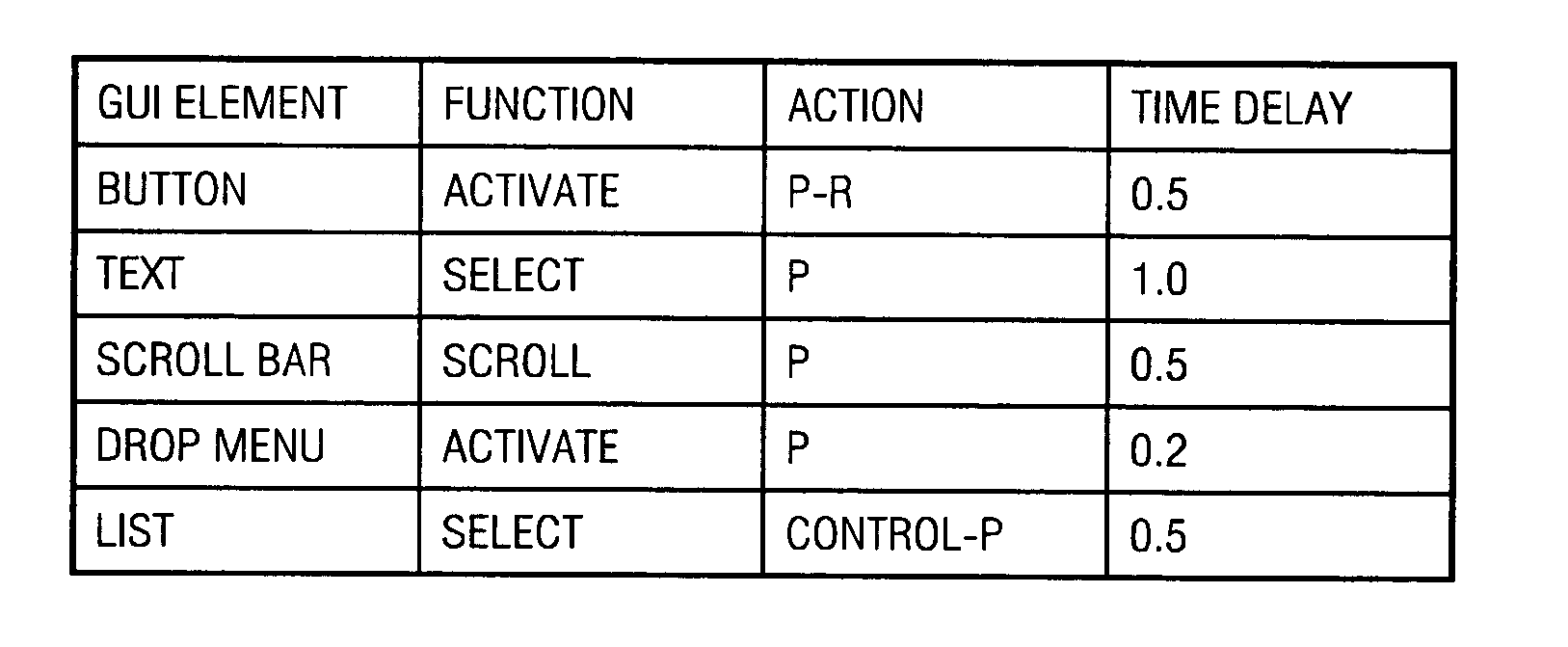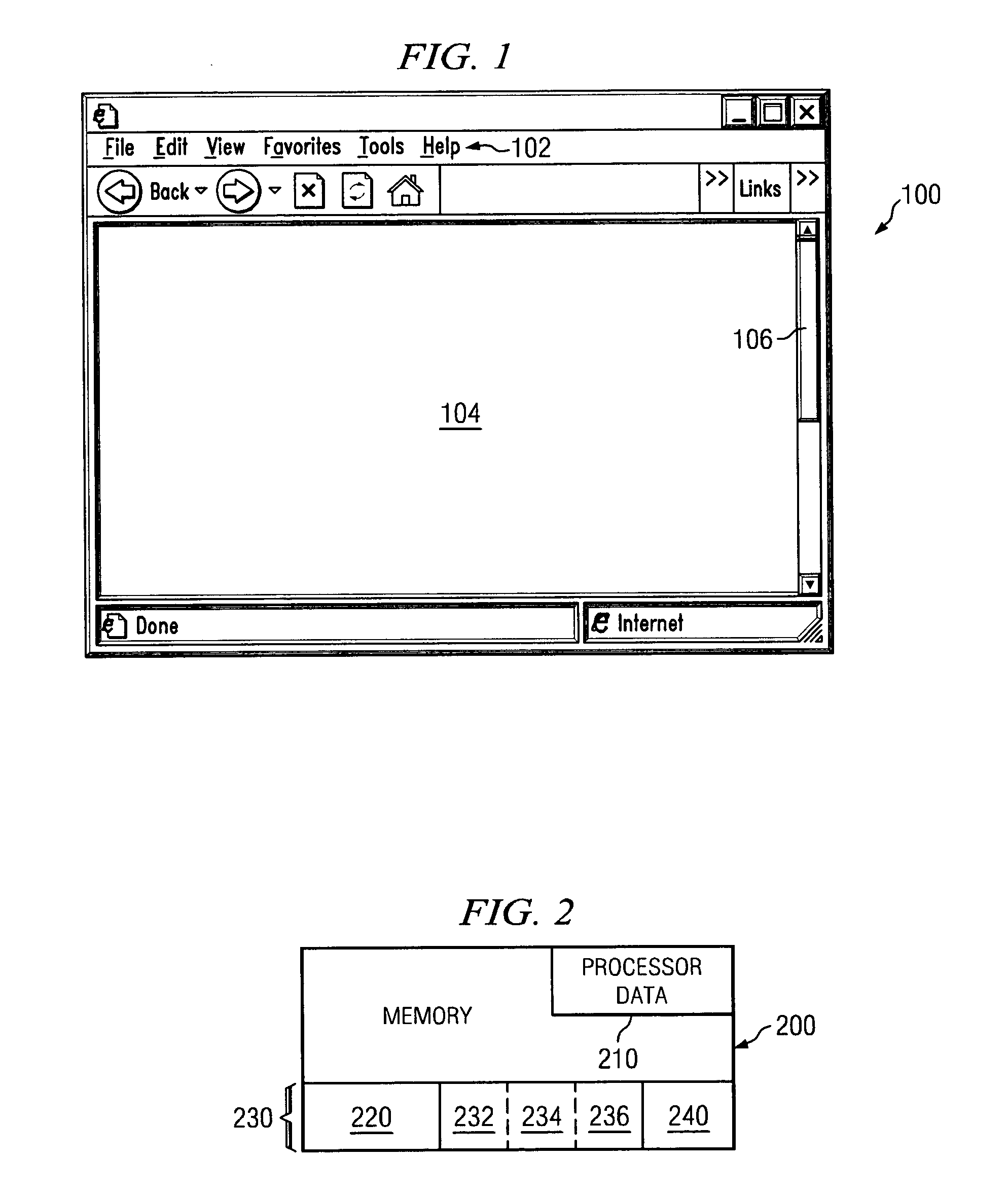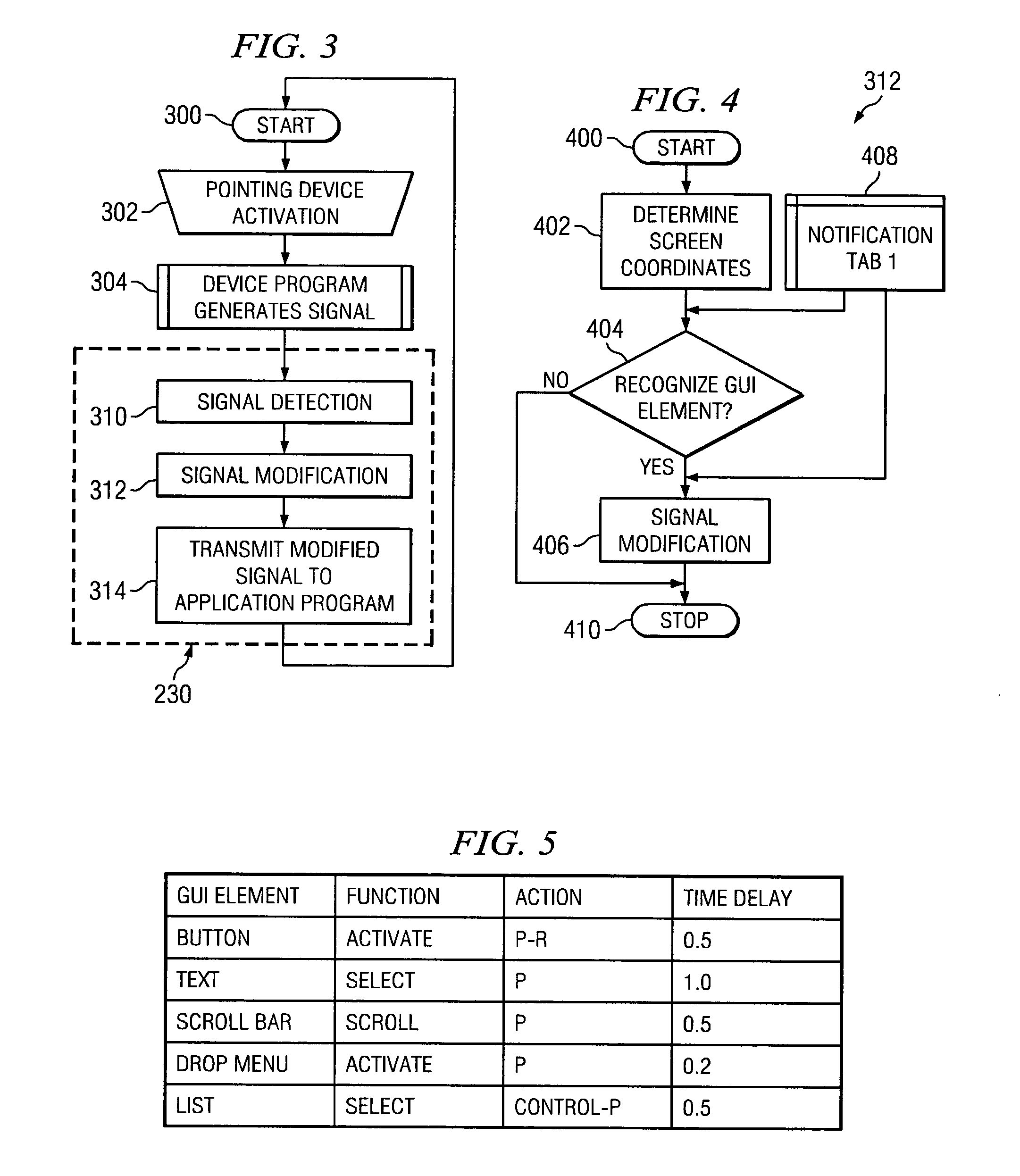Pointing device operation modification program
a technology of operation modification and pointing device, applied in the direction of electric digital data processing, instruments, computing, etc., can solve the problems of not all application programs understand and respond to the scroll wheel signal, and all pointing devices have scroll wheels, so as to simplify many common user tasks
- Summary
- Abstract
- Description
- Claims
- Application Information
AI Technical Summary
Benefits of technology
Problems solved by technology
Method used
Image
Examples
Embodiment Construction
[0014] As used herein, the term “activate” means any action that causes a pointing device to generate a signal, including without limitation moving the device, pressing a device button, and releasing a device button.
[0015] The term “command button” means any graphic element in a display that may be activated and that upon activation causes the computer to perform an action.
[0016] The term “device button” refers to a physical button on a user input device.
[0017] The term “device program” means any computer program that provides support and control to a specific hardware component, such as a pointing device, thereby allowing other programs to use the specific hardware component.
[0018] The term “graphic element” or “GUI element” includes without limitation graphic characters, objects, and images.
[0019] The term “hardware” includes any physical equipment in a computer system, such as a central processing unit (CPU), input devices, and output devices.
[0020] The term “operating syst...
PUM
 Login to View More
Login to View More Abstract
Description
Claims
Application Information
 Login to View More
Login to View More - R&D
- Intellectual Property
- Life Sciences
- Materials
- Tech Scout
- Unparalleled Data Quality
- Higher Quality Content
- 60% Fewer Hallucinations
Browse by: Latest US Patents, China's latest patents, Technical Efficacy Thesaurus, Application Domain, Technology Topic, Popular Technical Reports.
© 2025 PatSnap. All rights reserved.Legal|Privacy policy|Modern Slavery Act Transparency Statement|Sitemap|About US| Contact US: help@patsnap.com



